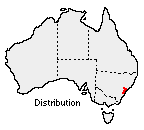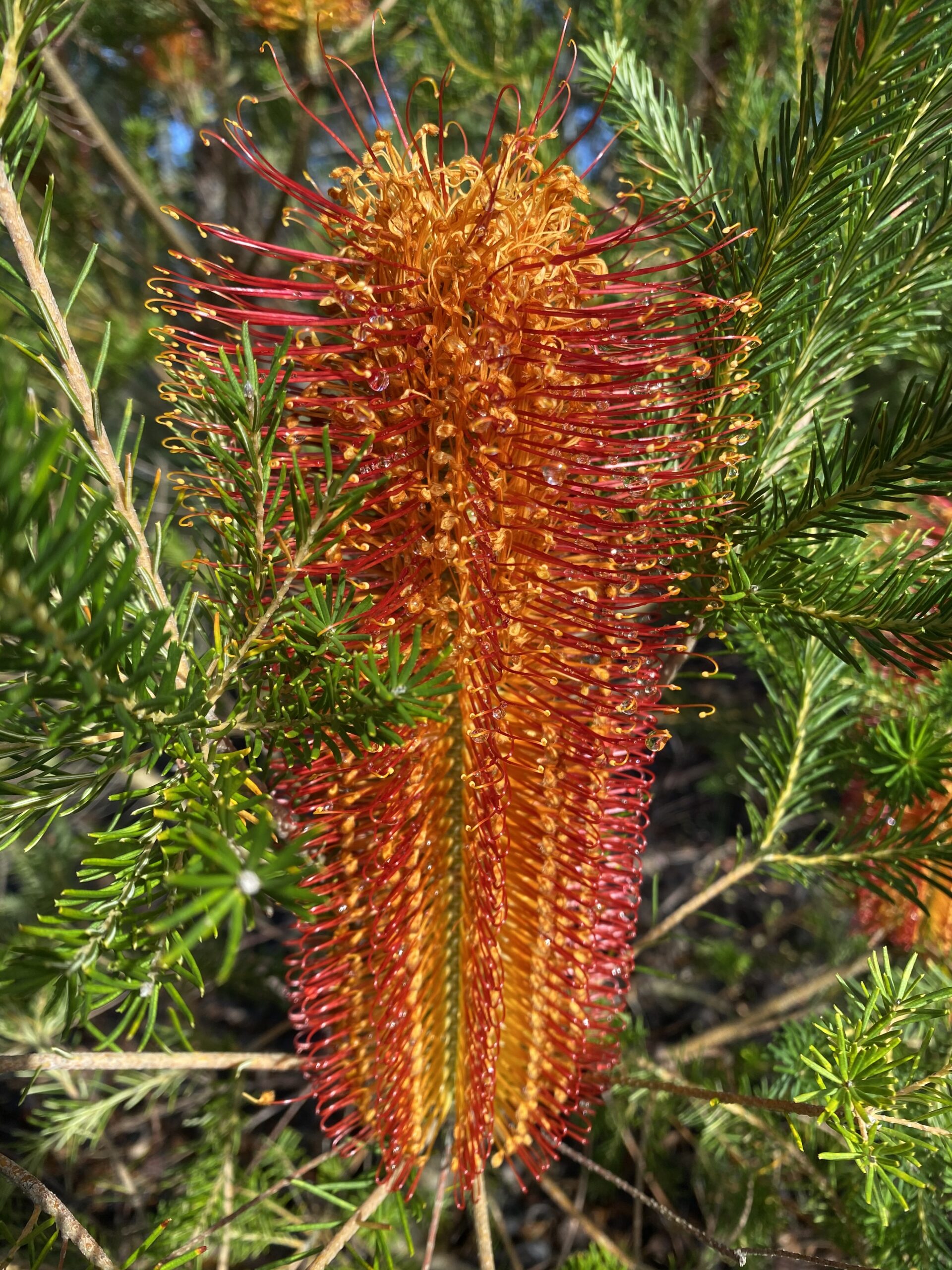
Banksia Ericifolia
Common name: Heath Leaved Banksia
I grow best: Part shade/full sun
• Height up to 5m
• Sandy soil
• Flowers – March – August
• Attracts – Bees, birds, butterflies, other insects
• Cultural uses
• Eastern Suburb Banksia Scrub
Looks like: Banksias range from low-growing shrubs to trees. B. ericifolia, even without flowers, is an attractive, fast growing, bushy shrub growing from 4 – 7 m high. It is most useful as a garden feature or screen plant. The spent flower spikes form woody seed bearing cones with the fruit remaining closed for an indefinite period. These seed cones are an interesting feature of the genus
Banksia ericifolia (Heath-leaved Banksia) is undoubtedly one of the most beautiful banksias in Australia, with its large striking spikes of yellow to reddish-orange flowers contrasted with small, linear, light-green to greyish-green leaves. Not only is it the most colourful of the eastern Banksia species when in flower, it is also one of the best plants for attracting honey-eating birds and makes an interesting addition to any garden of Australian character. The cylindrical flower spikes of B. ericifolia are quite large at 4-6 cm wide and up to 30 cm long. Flowers open from the top of the spike down, in which the style characteristically remains a hooked shape. Flowering occurs over an extended period beginning in autumn and continuing through to early spring. They last well as cut flowers or indefinitely as dried flowers.
Habitat & Propagation:
B. ericifolia naturally occurs in heath or shrub-woodland vegetation, distributed widely on the central coast of New South Wales to the adjacent ranges between Collaroy and Jervis Bay. It chiefly occurs in soils of sandy loam, deep sand or sand over sandstone in well drained areas.
Propagation is most successful from seed rather than cuttings. Once established it may be lightly pruned to retain its bushy dense habitat. In cultivation this species has proven to be fairly adaptable, very hardy and tolerant of frosts. Being an Eastern Australian Banksia it remains relatively resistant to the root rotting fungus Phytopthora cinnamomi. Damage by insect predators such as stem borers or psyllids occurs occasionally, but the plant generally remains pest free. Iron deficiency however, is common in this species when planted in soils of high pH or when grown near concrete building foundations. Hence for reliable results the species requires acid soils or alternatively the application of iron chelate to assist in correcting the soil PH. Fertilisers with a high phosphorus component should be avoided. Although it may successfully grow in wet areas, it prefers well drained soils and will grow in full sun or semi-shade conditions. Seeds should be sown in a very freely draining seed-raising mix which should not be allowed to dry out. As Banksia seedlings are prone to fungal attack, it is better to sterilise the seed-raising mix before planting. If this is not practical, very clean ingredients should be used. Seedlings should be transplanted into small pots as soon as the first true leaves appear. A potting mix made from equal parts of river sand, loam and leaf mould (or peat moss) is generally suitable.
| Family | Proteaceae |
| Plant Type | Small tree, Small shrub, Large shrub |
| Width | 2.5 |
| Flowering Time | Spring, Summer, Autumn |
| Soil Type | Sandy, Loamy, Sandy loam, Clay loam, Potting mix, Saline, Poor soil |
| Climate Zone | Warm temperate, Cool temperate, Mediterranean |
| Growth Habit | Evergreen, Dense foliage |
| Soil Moisture | Well-drained, Moist moderate drainage |
| Special Uses | Cut flower, Decorative fruit, Erosion control, Honey producing plant, Bird nesting plant, Fast growing |
| Height | 7 |
| Flower Colour | Red, Orange, Gold |
| pH Level | Acid, Neutral, Alkaline |
| Plant Environment | Low maintenance garden, Poolside, Flower garden, Coastal garden, Drought resistant |
| Light | Sunny, Light shade |
| Lifespan | Perennial |
| Frost Tolerance | Tolerates light frost |
| Attracts Wildlife | Bees, Nectar eating birds, Butterflies, Other insects |
Distribution:


